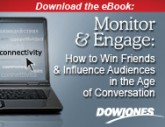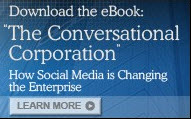Using Trust Rather than Volume in Social Media, Part II
Posted on February 23, 2010. Filed under: Social Media | Tags: brand reputation, Facebook, MySpace, social networks |
Tethering and Tribal Differences
Let’s imagine the potential customer as a tree comprised of three rings radiating outward 1) their core; close friends, family and the activities and brands they identify themselves with and are strongly tethered to, 2) extended networks of acquaintances and their interests, such as exist on Facebook or LinkedIn, which provide on occasion some interesting new item or experience, 3) strangers, brands and activities that exist on the periphery; things they may have seen or heard of in passing but paid no attention to.
If we can understand these areas, we can make it to our advantage rather than disadvantage that the inner circle is hardest to access and the outer circle is least trusted but a source of personal expansion. Then we can turn to understanding credibility.
A popular and useful way to look at the situation is to think of people as using the web to join and establish groups analogous to traditional tribes. According to RAND theorist David Ronfeldt, these initial groups created and legitimized identity and fostered a sense of belonging, and did not admit of hierarchical leadership. This maps very well onto what we’ve just sketched and will help understand the issue of credibility.
For the average consumer, establishing their internet presence and locating their core friends, family, activities and brands is very simple. It does not take long to find blogs, message boards, media outlets and even beloved brands on the web.
Core-building was the original attraction behind Facebook, what put it over MySpace; on Facebook you could establish and solidify your core, and simultaneously connect to and have some distance from your extended network. MySpace was simply too open, exposing your core tribes to the world of strangers, a world you almost always want nothing to do with, with a very low payoff.
Facebook is now working to put a person’s core tribe and their extended network of tribes as close as possible, and pull the world of strangers into this structure as well. It remains to be seen if this will work, but I sincerely doubt it. It’s simply more likely that it will turn into a much better done MySpace, which will turn off many users, than it is that it will get 300 million profitable consumers to bare their souls to the world.
Come back on Thursday for Part III: The Contradiction.
Damien DuPont is a report writer and quality assurance specialist in the Dow Jones Media Lab and is based in New York.
Read Full Post | Make a Comment ( None so far )Fighting the urge to scratch your itch
Posted on October 28, 2009. Filed under: Public Relations, Social Media | Tags: brand identity, Facebook, MySpace, Social Media, Twitter |
It is easy to lose sight of the important fact that disparate groups compose a brand’s social media landscape.
Social media users put important parts of their identity on display. And when one’s identity has a stake in something, emotions will be involved. A Facebook user might join a fan page of a product simply because it’s cool, and a Twitter user motivated by a sole bad experience might suddenly complain about it. But the sort of complaints one might see on a forum dedicated to a community with strong preexisting beliefs about how a product or service ought to be will be of a whole different intensity.
For instance, popular novelist Dan Brown can count 97,000 fans on his official Facebook fan page and hundreds of related user-created pages, and it is not likely that many will be critical of him. On the other hand, forums or blogs dedicated to writing will likely be hotbeds of harsh criticism of his work.
Part of the established social media landscape around your brand may have engrained beliefs about your product tied to the community’s identity and perhaps even be the reason for a particular group’s existence. In this part of the blogosphere it’s more likely that a criticism will be tied into how the critics perceive their group, and so it may often be the case that the group is emotionally invested in advocating against your brand in a way that a disappointed customer might not.
These criticisms are likely not based on anything you could or wish to change but rather based on their beliefs about how things ought to be done. Nor is the group likely to be visible or influential to your target customers. As such it may be better to watch the group to see why their criticisms matter to them, or for ideas that may improve your products or services, rather than engage these critics.
As you identify groups that matter, you’ll likely find that existing social media channels such as MySpace and Facebook give you the mechanisms to grow the positively disposed but disparate communities where you can steer potential clients while further isolating the echo chambers of your harshest critics.
Damien DuPont is a report writer and quality assurance specialist in the Dow Jones Media Lab and is based in New York.
Read Full Post | Make a Comment ( None so far )


